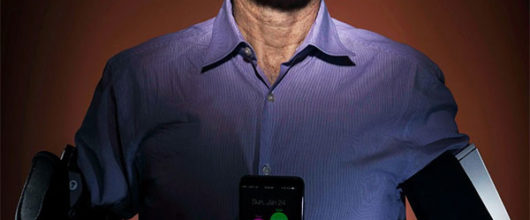Personal Radiation Detector | RadPavise-H Features: 2. Work with surface contamination probe RadProbe-AB 3. Support for indoor & outdoor positioning capabilities Applicatioin: Source search and localization RadPavise can work together with external probe RadProbe-AB to measure Alpha and Beta.
Read More
Introducing RadWall-E: Ethernet-enabled area radiation monitor
X-Z LAB now offers RadWall-E, a wired solution for area radiation monitoring, to complement our wireless area radiation monitor, RadWall-S. Powered by YSO + SiPM, RadWall-E measures gamma and X-ray radiation with a response time of less than 2 seconds. Use RadWall-E as a standalone monitor or connect it to your network via Ethernet. With our new cloud-based radiation monitoring system, RadSys 2.0, you can manage multiple area monitors in your network and view data in context of time, date, and location. Set alarm thresholds and receive email alerts when radiation exposure reaches a dangerous level. View product details
Read More
X-Z LAB’s Personal Radiation Detector RadPavise used by Xinhua News Agency in Fukushima
Last month, Xinhua journalist Hua Yi visited the Fukushima Daiichi nuclear power plant along with other reporters under the invitation of Tokyo Electric Power Company, Inc. (TEPCO). Armed with RadPavise | Personal Radiation Detector, Hua recorded the increasing levels of radiation as they neared the power plant. 24 km from the power plant, the reading was 0.114 µSv/h, twice that of Tokyo. At 5 km, the reading jumped to 5–10 µSv/h, more than 100 times greater. Inside the power plant itself, the radiation level was as high as 150 µSv/h. Read full article
Read More
RadWall M | Area Radiation Monitor installed at University of Chicago’s cyclotron research facility
The University of Chicago opened up its cyclotron research facility in January, making it the only medical institution in Illinois with an operational cyclotron. The cyclotron will allow UChicago to manufacture radioactive isotopes in-house for research. The cyclotron program is directed by Dr. Richard Freifelder. In this video, Dr. Freifelder sets up RadWall M | Area Radiation Monitor in the facility to ensure safety for the researchers.
Read More
RadTarge II in Stanford Wearable Biosensors Study
In a recent study led by Mike Snyder and Xiao Li of Stanford University, physiological data gathered from wearable biosensors were found to be useful indicators of an individual’s health. RadTarge II D700 was used to measure personal radiation exposure over a six month period. The information collected revealed heightened radiation exposure “during airline flights or during chance encounters with individuals or locations with high radiation. Most importantly, it demonstrates that simple personal wearable devices can identify these levels and provide immediate feedback.” Read the full study (Digital Health: Tracking Physiomes and Activity Using Wearable Biosensors Reveals Useful Health-Related
Read More
Leak at nuclear reactor in Norway is contained: operator
A leak at a small nuclear reactor in Halden, Norway, has been contained, according to its operator. No immediate danger to staff or the surrounding environment has occurred. Atle Valseth, research director at the Institute for Energy Technology, estimated that up to 8 employees were present during the leak. The crew evacuated as soon as the leak was detected and did not receive hospital treatment as the dose they received was low. Although the incident occurred on Monday, the Norweigian Radiation Protection Authority (NRPA) was not alerted until the following day. The regulator is investigating the circumstances that caused the
Read More
Radiation protection plans for astronauts evaluated by NASA
Ahead of the launch of the Orion spacecraft, NASA is evaluating radiation protection plans for astronauts when they go into deep space. Engineers, astronauts and designers are conducting testing in a representative model of the spacecraft. Designers of the Orion capsule are also testing their plan to help astronauts escape from radiation in space. In the even of a radiation incident, astronauts will take shelter and create a fort around them using their supplies. Full Article
Read More
Children’s radiation safety overlooked, say pediatricians
Children’s radiation safety is being overlooked and must be addressed, according to doctors Alan Schroeder, of Stanford and James Duncan of Washington University in St. Louis. The pediatricians published a Viewpoint article in JAMA Pediatrics urging for increased attention to the amount of ionizing radiation children receive. Information campaigns such as Image Gently have been documented to successfully bring radiation safety to the forefront at children’s hopsitals. However, a lot of imaging is provided outside of the hospital setting, allowing for too much variability, the authors argued. Additionally, individual hospitals can remain anonymous with no accountability for excessive imaging. To
Read More
Energy Department ends inquiry into Idaho radiation exposure
Two years ago, a radiation leak happened at an eastern Idaho nuclear facility, leading to the contamination of nine workers. According to the U.S. Department of Energy, the consequences of this event were low and they will not conduct a formal investigation. The agency will continue to monitoring the company’s efforts to improve nuclear safety at the Idaho National Laboratory. Full Article
Read More
Healthcare providers in cath labs may be harmed by radiation
A new study done by Maria Grazia Andreassi of the CNR Institute of Clinical Physiology in Pisa, Italy, shows that healthcare workers in cardiology may be harmed by radiation at work. Hospital staff who work in so-called “cath labs”, where procedures for many heart conditions including heart arrhythmias and heart defects are conducted, are exposed to high doses of X-ray radiation from some of the imaging machines used in surgery. Data from 466 exposed cardiologists, nurses, and technicians over 10 years has pointed to a 2.5% increase in the risk of cancer, 8% increase in skin legions, and 30% increase
Read More

